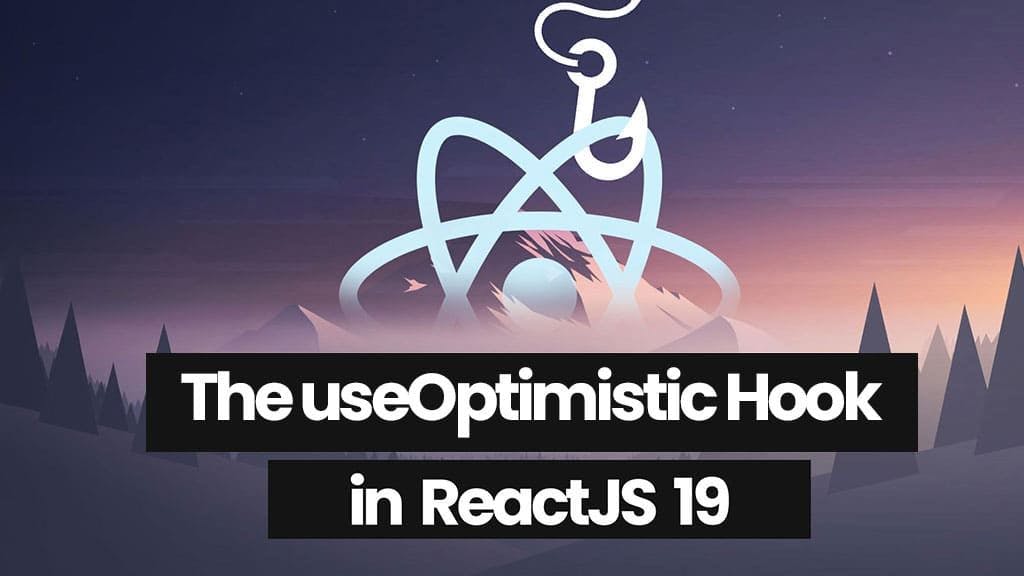Introduction
React 19 presents exciting new features focused on enhancing developer experience and application performance. Among these additions, the useOptimistic hook aims to simplify optimistic data updates, a common pattern in user interfaces (UIs) and data-driven applications.
What is Optimistic Data Updating?
Optimistic data updating involves updating the UI immediately upon user interaction, assuming the data operation will succeed, even before receiving confirmation from the server. This creates a seamless user experience by providing instant visual feedback, and can be particularly valuable when dealing with slow network connections.
Previous Approaches to Optimistic Data Updating
Prior to useOptimistic, developers typically implemented optimistic updates using a combination of state management libraries like Redux or custom solutions involving local state variables and manual UI updates. These approaches often required more code boilerplate and could lead to potential inconsistencies if the server response differed from the assumed outcome.
Introducing useOptimistic
React 19's useOptimistic hook streamlines this process, offering a built-in mechanism to handle optimistic updates. It accepts a data fetching function as an argument and automatically manages the following:
- Initial State: Provides initial state values to display before data fetching begins.
- Optimistic Update: When a data operation is triggered (e.g., form submission), it updates the UI with the expected data.
- Server Response Handling: Upon receiving the server response, it updates the UI again, either confirming the optimistic update or reverting to the original state if the operation fails.
- Error Handling: Catches and handles errors gracefully, preventing unexpected UI behavior.
Code Example with Explanation
Consider a simple example of updating a user's profile name:
import { useState, useOptimistic } from 'react';
function ProfileEditor() {
const [name, setName] = useState('John Doe');
const [isLoading, setIsLoading] = useState(false);
const [error, setError] = useState(null);
const updateName = useOptimistic(async (newName) => {
setIsLoading(true);
setError(null);
try {
const response = await fetch('/api/update-name', {
method: 'POST',
body: JSON.stringify({ name: newName }),
});
if (!response.ok) {
throw new Error('Failed to update name');
}
return await response.json(); // Assume successful response format
} catch (error) {
setError(error.message);
return null; // Return null to indicate failure
} finally {
setIsLoading(false);
}
});
const handleNameChange = (event) => {
setName(event.target.value);
};
const handleSubmit = async () => {
const updatedName = updateName(name); // Trigger optimistic update
if (updatedName) {
// Optimistic update successful, update local state (optional)
setName(updatedName.name);
}
};
return (
<div>
<input type="text" value={name} onChange={handleNameChange} />
<button onClick={handleSubmit} disabled={isLoading}>
{isLoading ? 'Saving...' : 'Save Name'}
</button>
{error && <p style={{ color: 'red' }}>{error}</p>}
</div>
);
}
Explanation:
- State Management: We use useState hooks to manage the name, isLoading, and error states.
- useOptimistic Hook: We call useOptimistic to create the updateName function.
- Data Fetching: async function (`fetch('/api/update-name')) performs the server update.
- Optimistic Update: Upon successful fetch, updates are returned and potentially used to locally update state (optional).
- Error Handling: Catches and displays errors.
- State Updates: Sets isLoading and error states accordingly.
- Event Handlers:
- handleNameChange updates the local name state.
- handleSubmit triggers updateName and conditionally updates local state if successful.
- JSX: Renders the UI components with appropriate data and error messages.
Comparison with Previous Approaches
Compared to previous solutions for optimistic updates, useOptimistic offers several advantages:
- Simplified Code: It eliminates the need for manual state management and data fetching logic, reducing boilerplate code and potential pitfalls.
- Improved Readability: The code becomes more concise and easier to understand, with clear separation of concerns between UI updates and data operations.
- Automatic State Updates: The hook handles both optimistic and server-confirmed updates, ensuring consistency and avoiding manual state synchronization.
- Error Handling: It incorporates built-in error handling, preventing unexpected UI behavior and providing informative error messages.
- Clarity: The hook's name and behavior are self-explanatory, making it easier for developers to understand and use effectively.
Overall, useOptimistic streamlines optimistic data updates in React 19, promoting cleaner code, improved maintainability, and a more robust user experience.
Related Blogs
- Optimistic UI Updates in React: Simplifying State Management
Explore how to efficiently implement optimistic UI updates in React applications and compare different methods to achieve instant feedback to users. - React Hooks in Depth: A Comprehensive Guide
Dive into React's hook system, detailing the use of hooks like useState, useEffect, and useContext, and how to leverage hooks for clean and reusable component logic. - Handling Async Operations in React with useEffect and useState
Understand how to handle asynchronous operations like data fetching in React, and learn when and how to use useEffect and useState hooks for smooth UI updates. - React 19 Features You Should Know: What's New in the Latest Version
A guide on the new and improved features in React 19, with a special focus on how these features, including useOptimistic, streamline development and enhance performance.
Conclusion
The useOptimistic hook in React 19 brings a welcome addition to the React developer toolkit. It simplifies the implementation of optimistic data updates, leading to cleaner, more manageable code and enhanced user experience. While currently in the experimental stage, it holds great promise for improving the development process and application performance in future React versions.
Related Articles
- What is React JS? Features, Benefits, and Examples Explained
- Mastering React Hooks: The Comprehensive Guide on Hooks in React JS
- React Environment Setup: A Comprehensive Guide
- React vs Angular: Deciding the Best Framework for Your Project in 2025
- React 19 is Now Stable: Learn What's New in React 19
- React 19 Use Hook: What is Use Hook and Everything You Need to Know
- Secure React Applications: Common Vulnerabilities
- Mastering Advanced React Patterns: Higher-Order Components, Render Props, and Custom Hooks
- Mastering State Management in React: A Comprehensive Guide with Redux, Context API, and Zustand
- Learn How to Use TypeScript with React: Benefits and Best Practices
- Learn How to Build an Interactive Map with React and Leaflet
- How to Use Apollo Client with React for GraphQL Integration
- Debugging Memory Leaks in React: Tools, Fixes & Tips
- Why useEffect Runs Twice in React and How to Fix It
Master React 19 useHook: Everything You Need to Know
Next.js Firebase Push Notifications: Full Setup With FCM & Service Worker
About Muhaymin Bin Mehmood
Front-end Developer skilled in the MERN stack, experienced in web and mobile development. Proficient in React.js, Node.js, and Express.js, with a focus on client interactions, sales support, and high-performance applications.

